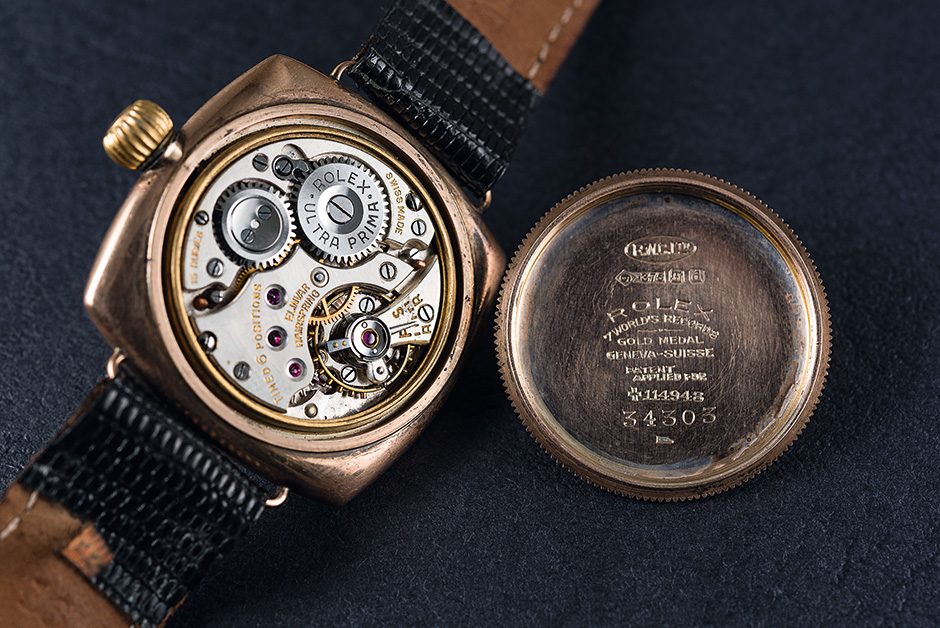Notes: Ladies Rolex 9ct Rose Gold Dress Watch from 1916. Beautiful Original White Porcelain ‘Red 12’ Dial. Rolex ‘W&D’ Swiss Made 28mm Case, not including the Crown. Original High Grade 15 Jewels, Rolex Swiss Made Movement.
When the wristwatch was a new idea, the position of the 12 wasn't immediately standardised at its now familiar position 90° anti-clockwise from the winding crown, (which is convenient to wear on the left wrist). Sometimes it was adjacent to the winding crown as on pocket watches or in an intermediate position between the crown and 90° anti-clockwise from it. Many early wristwatches were simply pocket watches either held on the wrist in leather cup attached to a strap, or with a chain or strap attached directly to the case by wire lugs. Because of this they didn't all follow the now accepted design of a wristwatch with regards to orientation of the dial and location of the crown. I have seen transitional wristwatches which, when strapped to the wrist, would have the 12 where we would expect to find the 3 today.
When the wristwatch was a new idea, the position of the 12 wasn't immediately standardised at its now familiar position 90° anti-clockwise from the winding crown, (which is convenient to wear on the left wrist). Sometimes it was adjacent to the winding crown as on pocket watches or in an intermediate position between the crown and 90° anti-clockwise from it. Many early wristwatches were simply pocket watches either held on the wrist in leather cup attached to a strap, or with a chain or strap attached directly to the case by wire lugs. Because of this they didn't all follow the now accepted design of a wristwatch with regards to orientation of the dial and location of the crown. I have seen transitional wristwatches which, when strapped to the wrist, would have the 12 where we would expect to find the 3 today.
Mechanism: The Hunter series of movements was introduced in 1923 and designed to replace the earlier Rebberg series. The new movements came in three versions: Prima, Extra Prima and Ultra Prima. The 10½ Hunter was named as 10½ is the size in lignes (23.7mm) and “Hunter” being the layout of the watch design, meaning that the winding crown was at 3, as in a hunter pocket watch (one with a lid that closed over the dial), rather than at 12 as in an open-face pocket watch. They are all 15 jewel constructions, and differentiated only by the timing tests carried out after construction: the best 10 per cent were given the coveted Ultra Prima designation, while the balance were split between Prima, which were the less accurate and Extra Prima, which fell in between. The Ultra Prima watches were also usually marked as such on the dial.
This early version of the Hunter was phased out with the introduction of the Superbalance series in 1935.
This early version of the Hunter was phased out with the introduction of the Superbalance series in 1935.



